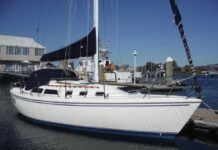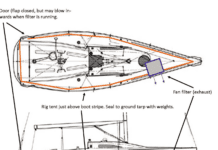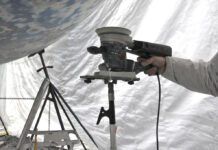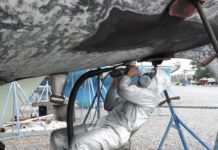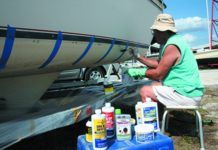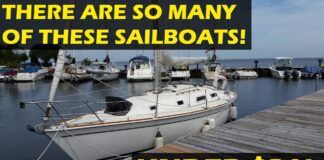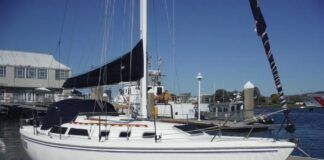Headsail Reefing
We have a Com-Pac 25 with a 110 hanked-on genoa. The mainsail has a single reef and while that has been enough so far, we are wondering if adding a reef to both sails would be sensible. We are very careful to listen to the marine weather forecasts, but an unforeseen blow while were half way between Boston and Provincetown is always possible. We would add a second reef to the main and put a single reef on the genoa. Do you have any advise for us? What might the costs be? (We don’t want a roller reefing system. We don’t mind going forward to tend the sails and we never singlehand.)
-Michael Hoffman
Concord, MA
It would be a good idea to add a second reef to your mainsail in any case. If your only headsail is the 110% genoa you could add a reef to it by having your sailmaker install a second tack fitting a foot or two above the present one on the boltrope, and a second clew grommet to match in the leech, with three or four reef points spaced between. However, as long as you’re going forward to wrestle anyway in a building breeze, it would be better from a sail-power perspective (and probably not much more expensive) simply to have a new working jib made for the boat.
Were making an assumption that the Com-Pac 25 comes with sheet leads for a working jib, but if it doesn’t, it would be simple enough to install a couple of blocks for sheeting the sail inside the shrouds. Check with your sailmaker on exactly where to place them. They might also suggest installing short sections of track for moveable leads, which would be even better, although it would add some hardware expense.
A well-cut working jib that can be sheeted close in rough conditions will get you home faster and more safely than a foot-reefed genoa. You may also find that with the improved sheeting angle, the working jib works as well as the 110% at getting you upwind in moderate conditions, especially when theres a lot of tacking involved.
———-
Spar Replacement
I need to replacethe mast on my Cal 33 (1988 model). It came with an NG 51. However, a rigger told me that an NG 60, only slightly larger, would be betteras it would be a little bit more beefy with only minimal additional weight. Is there any fault with this reasoning?
-Michael Patz
Hollis, NH
We’re not aware of any widespread structural problems with the masts on 1988-era Cal 33s. Assuming that you’re aiming to replace the mast because of normal wear-and-tear and corrosion after 14 years, we’d advise sticking with the NG-51 mast section originally specified for the boat. That section was figured into the boats performance characteristics, including righting moment. An NG-60 section may only be minimally heavier (its actually 0.6 lbs. heavier per foot), but that weight makes a big difference up high. Also, the outside diameter of the NG-60 section will be larger than the NG-51, which would mean that you’d also have to enlarge the partners and replace the mast step.
There are plenty of times when beefier is better, but we don’t think this is one of them. For specific advice, call Rig-Rite in Warwick, RI at 401/739-1140. They list the specs for both mast sections, including moments of inertia, on their website at www.rigrite.com.


